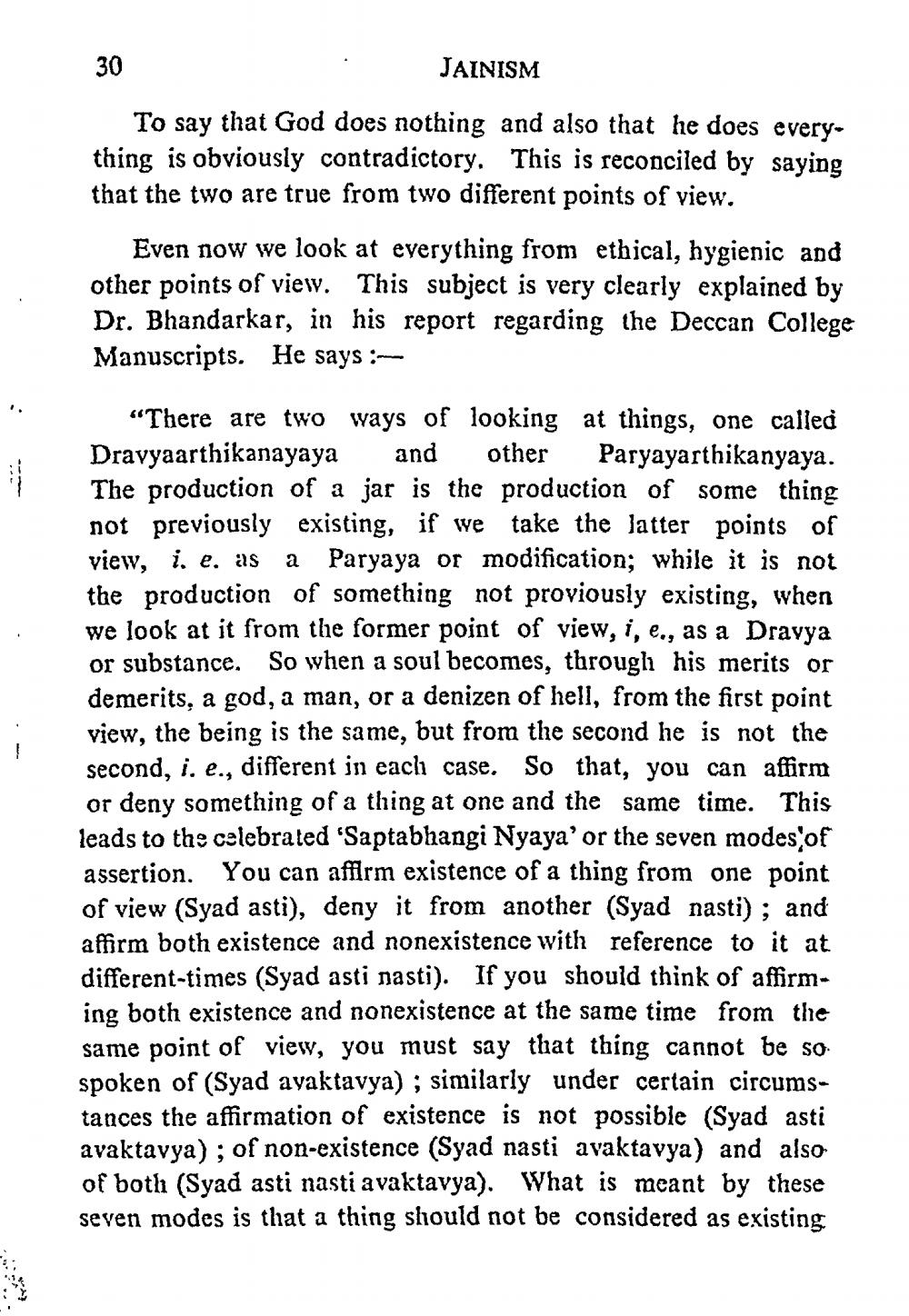________________
30
JAINISM
To say that God does nothing and also that he does everything is obviously contradictory. This is reconciled by saying that the two are true from two different points of view.
Even now we look at everything from ethical, hygienic and other points of view. This subject is very clearly explained by Dr. Bhandarkar, in his report regarding the Deccan College Manuscripts. He says :--
“There are two ways of looking at things, one called Dravyaarthikanayaya and other Paryayarthikanyaya. The production of a jar is the production of some thing not previously existing, if we take the latter points of view, i. e, as a Paryaya or modification; while it is not the production of something not proviously existing, when we look at it from the former point of view, i, e., as a Dravya or substance. So when a soul becomes, through his merits or demerits, a god, a man, or a denizen of hell, from the first point view, the being is the same, but from the second he is not the second, i. e., different in each case. So that, you can affirm or deny something of a thing at one and the same time. This leads to the celebrated 'Saptabhangi Nyaya'or the seven modes of assertion. You can afflrm existence of a thing from one point of view (Syad asti), deny it from another (Syad nasti); and affirm both existence and nonexistence with reference to it at different-times (Syad asti nasti). If you should think of affirming both existence and nonexistence at the same time from the same point of view, you must say that thing cannot be so spoken of (Syad ayaktavya); similarly under certain circumstances the affirmation of existence is not possible (Syad asti avaktavya); of non-existence (Syad nasti avaktavya) and also of both (Syad asti nasti avaktavya). What is meant by these seven modes is that a thing should not be considered as existing




